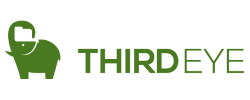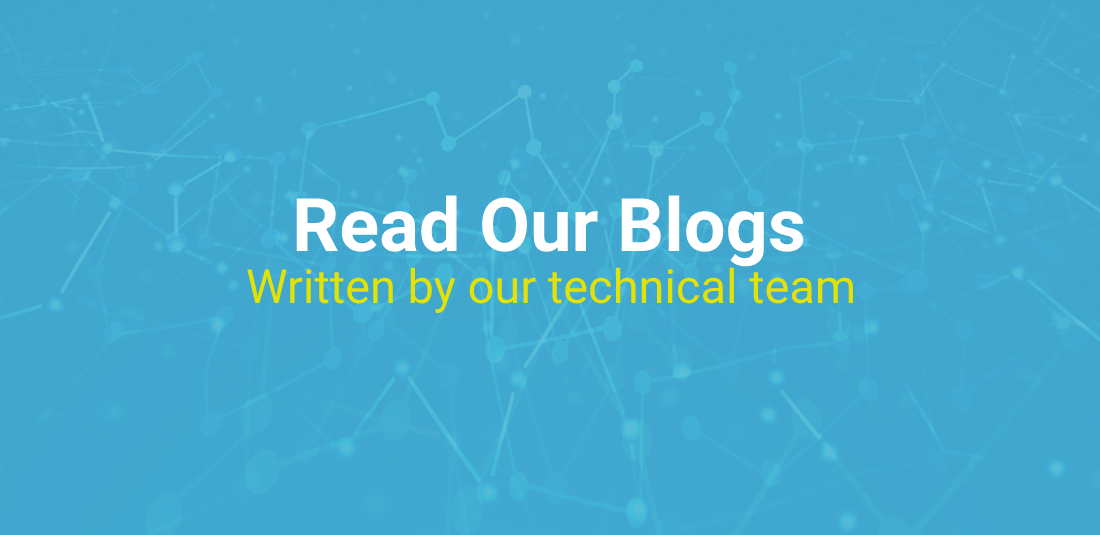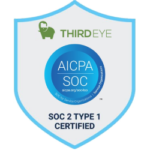Blogs or Expert Columns
Powershell Scripts
Powershell Scripts A PowerShell script is a text file that contains a series of PowerShell commands. These commands can be used to automate tasks, such as managing files and folders, configuring applications, and performing administrative tasks. How are PowerShell scripts used? PowerShell scripts can be used for a variety of purposes, including: Automating tasks: PowerShell scripts can be used to automate repetitive tasks, such as backing up files, updating software, or configuring settings. This can save time and effort, and it can also help to ensure that tasks are performed consistently. Managing files and folders: It can be used [...]
Polybase
Polybase PolyBase enables your SQL Server instance to query data with T-SQL directly from SQL Server, Oracle, Teradata, MongoDB, Hadoop clusters, Cosmos DB, and S3-compatible object storage without separately installing client connection software. You can also use the generic ODBC connector to connect to additional providers using third-party ODBC drivers. PolyBase allows T-SQL queries to join the data from external sources to relational tables in an instance of SQL Server. A key use case for data virtualization with the PolyBase feature is to allow the data to stay in its original location and format. You can virtualize the external [...]
OpenCV
OpenCV OpenCV is the huge open-source library for the computer vision, machine learning, and image processing and now it plays a major role in real-time operation which is very important in today’s systems. By using it, one can process images and videos to identify objects, faces, or even handwriting of a human. When it integrated with various libraries, such as NumPy, python is capable of processing the OpenCV array structure for analysis. To Identify image pattern and its various features we use vector space and perform mathematical operations on these features. The first OpenCV version was 1.0. OpenCV is [...]
Node JS
Node.js Node.js is a server-side platform built on Google Chrome's JavaScript Engine (V8 Engine). Node.js was developed by Ryan Dahl in 2009 and its latest version is v0.10.36. The definition of Node.js as supplied by its official documentation is as follows − Node.js is a platform built on Chrome's JavaScript runtime for easily building fast and scalable network applications. Node.js uses an event-driven, non-blocking I/O model that makes it lightweight and efficient, perfect for data-intensive real-time applications that run across distributed devices. Node.js is an open source, cross-platform runtime environment for developing server-side and networking applications. Node.js applications are [...]
NLTK
NLTK NLTK is a toolkit build for working with NLP in Python. It provides us various text processing libraries with a lot of test datasets. A variety of tasks can be performed using NLTK such as tokenizing, parse tree visualization, etc… In this article, we will go through how we can set up NLTK in our system and use them for performing various NLP tasks during the text processing step. Introduction: NLTK is a toolkit build for working with NLP in Python. It provides us various text processing libraries with a lot of test datasets. A variety of tasks [...]
NGINX
NGINX NGINX is open source software for web serving, reverse proxying, caching, load balancing, media streaming, and more. It started out as a web server designed for maximum performance and stability. In addition to its HTTP server capabilities, NGINX can also function as a proxy server for email (IMAP, POP3, and SMTP) and a reverse proxy and load balancer for HTTP, TCP, and UDP servers. Backstory Igor Sysoev originally wrote NGINX to solve the C10K problem, a term coined in 1999 to describe the difficulty that existing web servers experienced in handling large numbers (the 10K) of concurrent connections [...]
MySQL
MySQL MySQL is currently the most popular database management system software used for managing the relational database. It is open-source database software, which is supported by Oracle Company. It is fast, scalable, and easy to use database management system in comparison with Microsoft SQL Server and Oracle Database. It is commonly used in conjunction with PHP scripts for creating powerful and dynamic server-side or web-based enterprise applications. It is developed, marketed, and supported by MySQL AB, a Swedish company, and written in C programming language and C++ programming language. The official pronunciation of MySQL is not the My Sequel; [...]
Kubernetes
Kubernetes What is Kubernetes? Kubernetes is software that automatically manages, scales, and maintains multi-container workloads in desired states Modern software is increasingly run as fleets of containers, sometimes called microservices. A complete application may comprise many containers, all needing to work together in specific ways. Kubernetes is software that turns a collection of physical or virtual hosts (servers) into a platform that: Hosts containerized workloads, providing them with compute, storage, and network resources, and Automatically manages large numbers of containerized applications — keeping them healthy and available by adapting to changes and challenges How does Kubernetes work? When developers [...]
Temenos Fabric or Kony
Temenos Fabric (formerly Kony) Why Temenos Fabric With Temenos Fabric financial institutions can focus their time and resources delivering superior app experiences instead of custom building digital channels backend capabilities. The Fabric feature set provides everything a development organization needs to support amazing omni-channel applications that exceed both user and business expectations. The solution combines all required omni-channel middleware capabilities into an integrated, cost effective solution that allows application development teams to efficiently deliver amazing application experiences. As a result using Temenos Fabric reduces application development time and cost, enables more parallel work streams, maximizes reuse, and simplifies deployments [...]
Kibana
Kibana Kibana is a free and open user interface that lets you visualize your Elasticsearch data and navigate the Elastic Stack. Do anything from tracking query load to understanding the way requests flow through your apps. Features VISUALIZE & ANALYZE A picture's worth a thousand log lines Kibana gives you the freedom to select the way you give shape to your data. With its interactive visualizations, start with one question and see where it leads you. Kibana core ships with the classics: histograms, line graphs, pie charts, sunbursts, and more. And, of course, you can search across all of [...]
Kapacitor
Kapacitor Kapacitor is a real-time streaming data processing engine. Kapacitor is a native data processing engine for InfluxDB 1.x and is an integrated component in the InfluxDB 2.0 platform.Kapacitor can process both stream and batch data from InfluxDB, acting on this data in real-time via its programming language TICKscript. This article describes collection of metrics from AWS Cloudwatch through Telegraf(a plugin-driven server agent for collecting and reporting metrics for all kinds of data), storing in InfluxDB ,analysing to detect anomalies and raise alerts and visualising using Chronograf. Key features of Kapacitor Process both streaming data and batch data. Query [...]
InfluxDB
InfluxDB Influx DB is an open source time series database written in Go language which is developed by InfluxData. It is optimized for high-availability retrieval of data,faster and storage of time series data in fields such as operations monitoring, application metrics, IoT sensor data, and real-time analytics. InfluxDB is a high performance Time Series Database which can store data ranging from hundreds of thousands of points per second. The InfluxDB is a SQL-kind of query language which was built specifically for time series data. Why use InfluxDB? Faster time Deep insights and analytics Efficient in developer productivity- InfluxDB is [...]
Vertica
Vertica What is Vertica? Vertica is a massive parallel processing or MPP data warehouse platform designed to work with big data. The platform can handle large datasets that may not be suitable for other databases because of their size. Why Vertica Makes a Good Database There are several reasons to choose Vertica. It integrates with Hadoop, so it is ideal for more advanced data analytic workflows. Other reasons include: It’s Cost-Effective As a self-managed MPP database, Vertica offers scalability and flexibility that others don’t. You can easily use it on commodity hardware, so you’re able to scale the database [...]
HELM
HELM Helm is the best way to find, share, and use software built for Kubernetes. What is Helm? Helm is widely known as "the package manager for Kubernetes". Although it presents itself like this, its scope goes way beyond that of a simple package manager. However, let's start at the beginning. Helm is an open-source project which was originally created by DeisLabsand donated to CNCF, which now maintains it. The original goal of Helm was to provide users with a better way to manage all the Kubernetes YAML files we create on Kubernetes projects. The path Helm took to [...]
Hadoop HDFS
Hadoop HDFS What is HDFS? HDFS is a distributed file system that handles large data sets running on commodity hardware. It is used to scale a single Apache Hadoop cluster to hundreds (and even thousands) of nodes. HDFS is one of the major components of Apache Hadoop, the others being MapReduce and YARN. HDFS should not be confused with or replaced by Apache HBase, which is a column-oriented non-relational database management system that sits on top of HDFS and can better support real-time data needs with its in-memory processing engine. The goals of HDFS Fast recovery from hardware failures [...]
GraphDB
GraphDB Graph databases are purpose-built to store and navigate relationships. Relationships are first-class citizens in graph databases, and most of the value of graph databases is derived from these relationships. Graph databases use nodes to store data entities, and edges to store relationships between entities. An edge always has a start node, end node, type, and direction, and an edge can describe parent-child relationships, actions, ownership, and the like. There is no limit to the number and kind of relationships a node can have. A graph in a graph database can be traversed along specific edge types or across [...]
Grafana
Grafana Dashboard anything. Observe everything. Query, visualize, alert on, and understand your data no matter where it’s stored. With Grafana you can create, explore and share all of your data through beautiful, flexible dashboards. Why Grafana? Unify your data, not your database Grafana doesn’t require you to ingest data to a backend store or vendor database. Instead, Grafana takes a unique approach to providing a “single-pane-of-glass” by unifying your existing data, wherever it lives. With Grafana, you can take any of your existing data- be it from your Kubernetes cluster, raspberry pi, different cloud services, or even Google Sheets- [...]
Google Vertex AI
Google Vertex AI Build, deploy, and scale ML models faster, with pre-trained and custom tooling within a unified artificial intelligence platform. Build with the groundbreaking ML tools that power Google, developed by Google Research Deploy more models, faster, with 80% fewer lines code required for custom modeling Use MLOps tools to easily manage your data and models with confidence and repeat at scale BENEFITS Train models without code, minimal expertise required Take advantage of AutoML to build models in less time. Use Vertex AI with state-of-the-art, pre-trained APIs for computer vision, language, structured data, and conversation. Build advanced ML [...]
Google Kubernetes Services
Google Kubernetes Services A simple way to automatically deploy, scale, and manage Kubernetes. Run your apps on the most automated and scalable managed Kubernetes platform Start quickly with single-click clusters and scale up to 15000 nodes Leverage a high-availability control plane including multi-zonal and regional clusters Eliminate operational overhead with industry-first four-way auto scaling Secure by default, including vulnerability scanning of container images and data encryption BENEFITS Speed up app development without sacrificing security Develop a wide variety of apps with support for stateful, serverless, and application accelerators. Use Kubernetes-native CI/CD tooling to secure and speed up each stage [...]
Google AI Platform
Google AI Platform Use AI Platform to train your machine learning models at scale, to host your trained model in the cloud, and to use your model to make predictions about new data. Where AI Platform fits in the ML workflow The diagram below gives a high-level overview of the stages in an ML workflow. The blue-filled boxes indicate where AI Platform provides managed services and APIs: ML workflow As the diagram indicates, you can use AI Platform to manage the following stages in the ML workflow: Train an ML model on your data: Train model Evaluate model accuracy [...]
GAN Models
Generative Adversarial Network (GAN) A generative adversarial network (GAN) is a machine learning (ML) model in which two neural networks compete with each other to become more accurate in their predictions. GANs typically run unsupervised and use a cooperative zero-sum game framework to learn. The two neural networks that make up a GAN are referred to as the generator and the discriminator. The generator is a convolutional neural network and the discriminator is a deconvolutional neural network. The goal of the generator is to artificially manufacture outputs that could easily be mistaken for real data. The goal of the [...]
fbProphet
fbProphet Prophet is a procedure for forecasting time series data based on an additive model where non-linear trends are fit with yearly, weekly, and daily seasonality, plus holiday effects. It works best with time series that have strong seasonal effects and several seasons of historical data. Prophet is robust to missing data and shifts in the trend, and typically handles outliers well. Prophet is open source software released by Facebook's Core Data Science team . Full documentation and examples available at the homepage: https://facebook.github.io/prophet/ Important links HTML documentation: https://facebook.github.io/prophet/docs/quick_start.html Issue tracker: https://github.com/facebook/prophet/issues Source code repository: https://github.com/facebook/prophet Implementation of Prophet [...]
Docker
Docker Docker makes development efficient and predictable Docker takes away repetitive, mundane configuration tasks and is used throughout the development lifecycle for fast, easy and portable application development – desktop and cloud. Docker’s comprehensive end to end platform includes UIs, CLIs, APIs and security that are engineered to work together across the entire application delivery lifecycle. Build Get a head start on your coding by leveraging Docker images to efficiently develop your own unique applications on Windows and Mac. Create your multi-container application using Docker Compose. Integrate with your favorite tools throughout your development pipeline – Docker works with [...]
Data Lake Analytics
Data Lake Analytics Azure Data Lake Analytics is an on-demand analytics job service that simplifies big data Easily develop and run massively parallel data transformation and processing programmes in U-SQL, R, Python and .NET over petabytes of data. With no infrastructure to manage, you can process data on demand, scale instantly and only pay per job. Start in seconds, scale instantly, pay per job Process big data jobs in seconds with Azure Data Lake Analytics. There is no infrastructure to worry about because there are no servers, virtual machines or clusters to wait for, manage or tune. Instantly scale [...]





